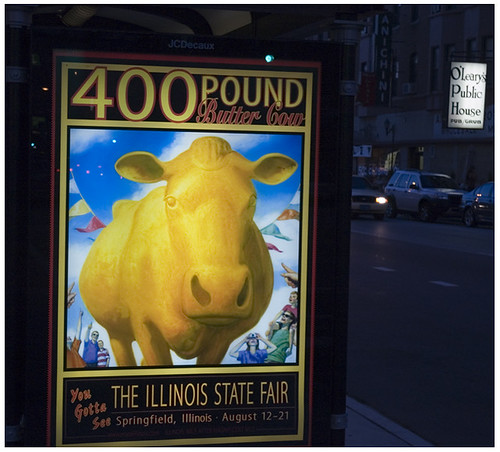Quote:
Originally Posted by dar512

I'm surprised no one has mentioned spontaneous combustion of the hay as a possible cause. It does happen from time to time. |
Hey there, Dar. It's another possibility. If this were to be the case, the onus is back on poor Kate O'Leary for negligently inadequate storage and monitoring. This would make her about as personally responsible as leaving a lantern out where Daisy

could knock it over.
From the reading you've provided, though, the hay would have to be pretty moist--"above 20-25% moisture content"--for its internal temp to rise enough to cause spontaneous combustion (nice monitoring technique, punching a probe into the hay and dropping a candy thermometer down it). On the one hand, you'd think that hay that had been cut and dried in the field, then baled or piled into a wagon, and transported into town might've dried out pretty well through all that handling. One also thinks "dry" when visualizing Daisy's lantern or Peg Leg's smoke igniting the hay.

The hay wasn't used just for dry bedding for the animals, of course, but also as feed. It's assumed, however, that the O'Learys had plain old hay and not silage, in which the moisture content is kept very high to encourage fermentation. "The ensiled product retains a much larger proportion of its nutrients than if the crop had been dried and stored as
hay or stover.
Silage is most often fed to dairy cattle, because they respond well to highly nutritious diets." Silage spoils without proper handling, and it seems unlikely to have been something poor 1871 city folks with just a low-tech barn (no silo etc.) would want to mess with.

.

On the other hoof, even if it was basic "dry" hay, the O'Leary's had a
lot of hay, and it
was farm fresh: "The O'Learys had just laid up plenty of coal, wood shavings, and hay to see them and their livestock {five cows, a calf, and a horse} through the winter"
(
http://www.chicagohistory.org/fire/oleary/).
According to theoretician Richard Bales, this was "at least two tons of hay." (At least he
claims his name is "Bales"

.) In terms of "square bales" we can picture, which weigh
40-80 (let's say 60) pounds each:
2 tons = 4,000 pounds = 240,000 bales of hay in the O'Learys' barn! 
No, wait--I multiplied instead of divided

.
2 tons = 66.666... bales 
.
That's a lot of hay! Stacked in one little barn, that's like transistors on a chip (and also where a limiting factor is overheating). A lot could go wrong.